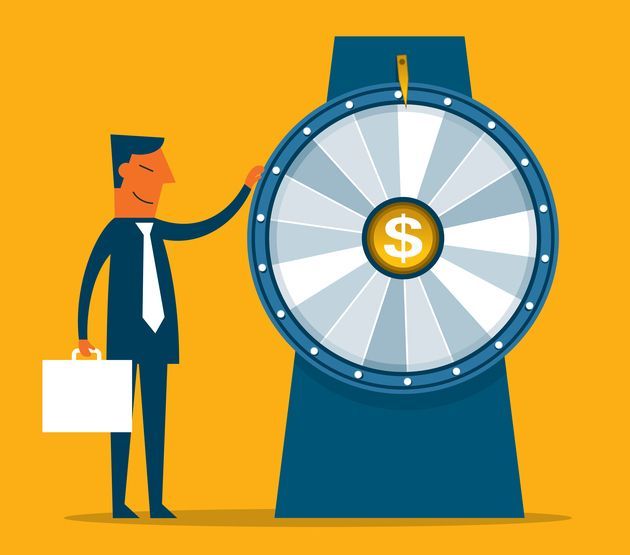Five important questions for B2B media: Part Two
Yesterday I posted the first in a five-part series of questions that folks in B2B media should be asking themselves. Here is the second post in that series.
Last week Steve Ballmer, the chief executive officer of Microsoft, was the keynote speaker at the annual Association of National Advertisers convention. And it was there -- before the group that pays the bills for all of us in media -- that he predicted the death of print publishing within 10 years. "Anything we think of as media today, whether it is print, TV or the Internet, will in fact be delivered over IP (Internet protocol) and will all be digital. Everything will be delivered digitally."
For the record, I am not one of those people who claims that print is dead. Rather, as I have said numerous times in this blog, I believe that "some of print is dead. Some of it isn't...yet. And some of it will live forever."
And I'll match Ballmer's prediction with one of my own: within 10 years, hundreds and hundreds of publications will still be printed on paper. Here are just a few of the periodicals on my desk that have a future in ink: Backpacker, Guideposts, Baseball Digest, Dwell, Giant Robot and Berkshire Living. And although I can add to that list easily, I must admit that there is not a single B2B magazine that I am convinced will be published on paper in 2017.
Tipping Points
Earlier this year, a blog post by my friend Colin Crawford at IDG caught the attention of the B2B media world. (Disclosure: IDG is a client of mine.) Colin wrote that "the absolute dollar growth of (IDG's) online revenues now exceeds the decline in our print revenues." That turning point became a tipping point for IDG. Within weeks, IDG closed the print edition of InfoWorld.
In that same post, Colin also disclosed that online revenue at IDG accounted for 35% of total U.S. publishing revenue. At some key brands, Colin said, online already generated the majority of revenue. And the company expected online revenue would reach approximately 50% of total revenue across the company by 2009.
Then, in June, CMP announced that non-print revenue had surpassed print revenue at the company for the first time. Chief Executive Officer Steve Weitzner told Folio that the "trend is continuing and the gap is actually growing." Armed with this "tipping point" data, CMP promptly closed some print publications, reduced the frequency of some others, and laid off 200 people.
And just a few weeks ago, Cygnus executives said that a decline in print advertising"has accelerated and is significantly larger than we projected during our business reviews, held less than three months ago." At that same time, Cygnus said that online ad sales had risen year-over-year by more than 50 percent. Apparently surprised by the arrival of such a tipping point, and worried about what it meant for the business, Cygnus slashed salaries across the company by 7.5 percent.
The Nature of Business
Business is nothing more -- and nothing less -- than resource management. A company controls things of value: raw materials, a workforce, etc. Management uses those things to create new things that it sells for a profit. But business is fluid. So as sales of Thing 1 rise, sales of Thing 2 sometimes fall. As the costs of creating Thing 3 increase; the costs of producing Thing 4 decline.
Thus every so often a business is forced to reconsider the things that it makes. Every so often a business is forced to ask itself: what business are we in?
In B2B media, we are in the business of connecting people with information and with each other. And it should be clear to everyone that the ways in which we do that must change. The core of what we have done for years and years -- produce print magazines -- is simply not as profitable as it once was. Print revenue is declining. Print productions costs are rising.
But other things we do are growing more profitable. Tradeshows and online publishing are generating more revenue than in the past. And, at least in online publishing, some costs are dropping. So it is inevitable -- inevitable -- that the business equation across all of B2B will shift. We will be closing more print magazines. Heck, within 10 years we may close them all. We will be shifting resources -- firing some workers, hiring new ones, changing incentive plans for ad sales, increasing investment in tradeshows and online while cutting the budgets of print operations.
This will happen. It is happening already and it will continue to happen.
You can't stop it. It's not about you. It's about business. It's about risks and rewards, profits and loss.
The only thing that is open for discussion is the rate of the change. And that is something that each of us must consider individually. Just as the profit potential of print products is declining, the career potential of the people tied to those products is slipping. Just as each company in B2B must decide when to shift resources away from underperforming units, each worker in B2B must decide when to back away from a losing proposition.
So this is today's question:
What is the tipping point for you and your publication? What metric will you use to determine when you'll pull resources from print and at what level? And more importantly, when will you decide that it doesn't make good career sense for you to continue to work on a print product?
(Update: For breaking news out of InfoWorld, check out this article from Folio.)
tags: journalism, b2b, media, trade press, magazines, newsletters, business media




